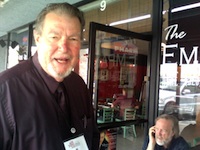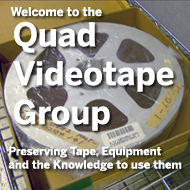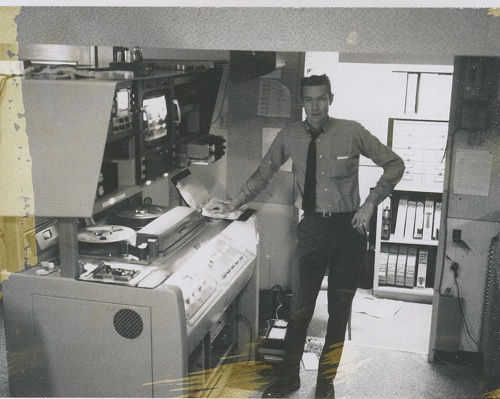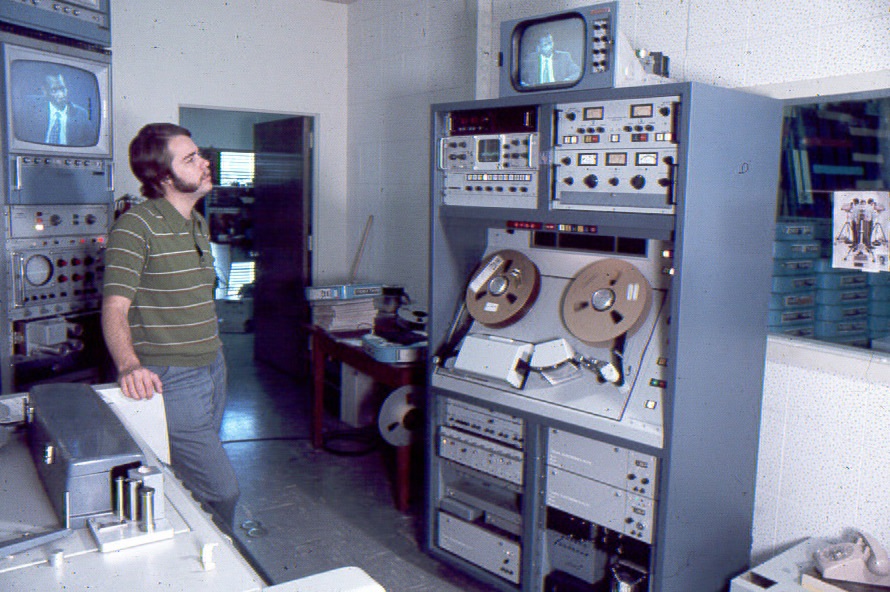| Home |
| Quad History |
| Group History |
| Social Events |
| Discussion List |
| Stories |
| How To Share |
| Tape Help Library |
| Equipment Help Library |
| Manuals On-Line (PDF) |
| Donate |
| Links |
Visual/Allen and the Bosch connection
As told by Al Sturm, June 2009 in a series of e-mails to Quad Videotape Group Secretary Ted Langdell

Steve Allen was a sharp video entrepreneur who from the early days of Quad was able to come up with accessories to improve the operation of the Quad machines. Among some of the products were:
Steve had two sharp engineers working with him, Clarence Boice (ex Philco), and Dick Silver (Stanford student.) who were the “power behind the throne.” They were very innovative for the time. Steve had friends at Ampex, and learned of a problem that it was difficult to obtain quality variable delay lines for Amtecs. It was very difficult matching the varicaps and holding tolerance on the wound inductors. They then started building and selling them to Ampex. They also built balanced output filters for the VR-1000C demod, which Ampex used. Jim Tharpe—Visual's president—was involved in TV all the way back to the DuMont days. One of his coups was to become the sole US importer for the Philips Plumbicon cameras. This was about the time when color hit so they were the “only show in town.” Among products Visual sold were the accessories from Allen Electronics. Jim Tharpe was intrigued with Allen and thought they could build a competing high band system due to their experience with signal systems. He then bought Steve Allen out. The problem turned out to much harder to solve than Visual was led to believe. Among the problems were:
Along with Clarence Boice and Steve Allen , Visual brought in engineers from France, Germany, and New York to solve the problems. This is when I went to work for Visual because of my field engineering background with Ampex. My job title was “Jack of all trades” trying to be a go between with Visual, Allen, and customers. I ended up being somewhat of a “fire fighter”. That's me with my "AJ squared away" crew cut. The pix is at Visual Sunnyvale, CA, (Circa 1968),
in front of Visual/Allen VA-1000 "
A number of the “Allenized” machines were sold by Visual Electronics. Some customers were: Corinthian Broadcasting (then a subsidiary of Dun and Bradstreet,) NBC New York for their time delay, and a number of educational and religious broadcasters. The Visual/Allen machine at KXTV was from a purchase made by George Jacobs, Director of Engineering for the Corinthian stations. KOTV Tulsa was another. The president of Visual Electronics Jim Tharpe and George were good friend from their past DuMont days. The next step by Visual was to build their own VTR. Tharpe had contacts in Germany with Fernseh who had a monochrome VTR with their own air bearing heads. (Bosch Fernseh BM-20 Monochrome Tube Type Quadruplex VTR--Deutsches Fernsehmuseum Wiesbadenwebsite) An association was formed between Fernseh and Visual. Fernseh supplied frame, transport, and heads to Visual who built a high band signal system, motor controls, and servo from the Allen electronics to compete with Ampex. I was in Darmstadt, Germany many times during the development and know quite a bit about their products. (Fersnseh head from Al Sturm collection-Al Sturm photo) Visual then made and marketed a machine called the VA50. (Engineer Bruce Braun monitors a VA-50 at Rev. Gene Scott's KHOF-TV, 30, San Bernadino, California—Bruce Braun collection) (Pair of VA-50's, likely at KHOF, from former KHOF-TV Asst. CE, (now Meredith Local Media VP of Engineering) Joe Snelson via Bruce Braun)
The VA-50 was a striped down version of the 100. I frankly can't remember what was left off. Pricing was around $45,000.00 for the VA-50 and $55,000.00 for the VA-100. (April 1966 (NAB?) Visual/Allen Quad VTR Catalog from Don Norwood Collection)
It had limited success. The problem was with all the design engineering, field engineering, and buyout items from Ampex and Fernseh costs, profit margins were very slim. Visual was having other financial problems so they shut the VTR project down. |





